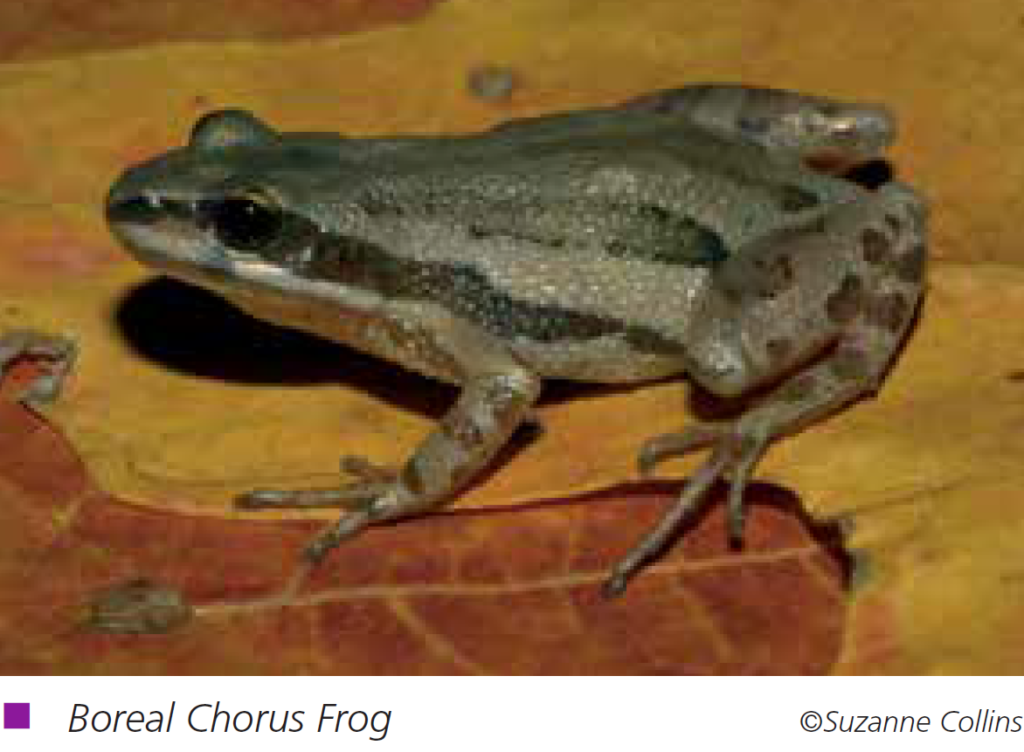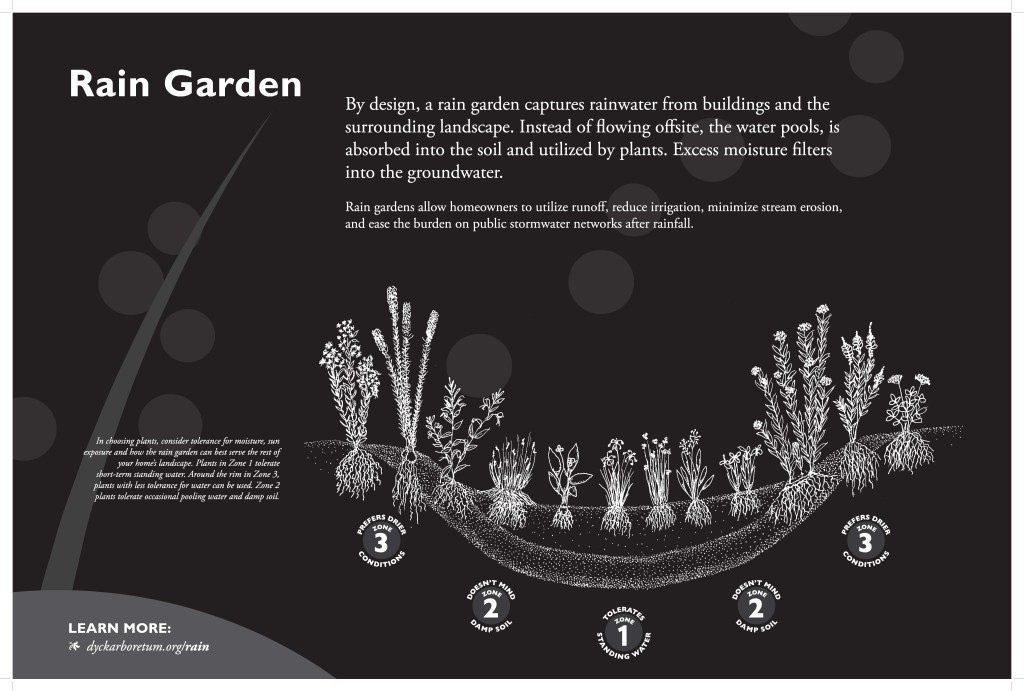If you come to the Dyck Arboretum during these wet spring days, you will be greeted by a unified chorus. I’m not referring to the sound of people with spring fever, singing the praises of nature while walking the paths and enjoying the prairie gardens and native plant communities. You will hear the mating call of the boreal chorus frog (Pseudacris maculata).
This up to 1.5-inches in length amphibian exhibits various shades of brown, gray or green with three dark brown stripes running down its back and an especially noticeable one running the length of its side through the eye from nose to hind leg. If you are patient and observant, you will see one at our greenhouse rain garden.

Location and Diet
The boreal chorus frog is one of the most widespread frogs in Kansas with distribution nearly throughout the state. They are commonly found in the daytime during the breeding season from late February through May. Outside of this time, they are seeking refuge under cover of wetland vegetation or soil. After rains or during humid nights, they emerge to forage for small invertebrates. According to the Kansas Herpetofaunal Atlas, in a 1906 article by F.A. Hartman, he reported finding algae and ants in the stomachs of young specimens and spiders in the stomachs of adults.

Find Them at Dyck Arboretum
Follow our paths to the rain garden/small pond by our greenhouse or simply walk toward the unmistakable high-pitched shrill sound to find these critters. When you approach the pond edge, their calls will stop. If you stay quiet and still, one-by-one their clicking trill (like the sound of running a fingernail along the teeth of a comb for two to fives seconds with a slight rise in inflection) will return. At full strength, the volume of their collective chorus may make you want to hold your ears.

As we humans avoid physical contact from each other during these anxious times of a worldwide pandemic, I find some comfort in knowing that cycles of the natural world are still carrying on around us. Amphibians may be facing other challenges as my colleague Katie Schmidt recently wrote about. But I’m glad these Arboretum chorus frogs are not practicing social distancing at the moment. Their mating call signals that their population will be alive and well here in the future.
Creating Frog Habitat

If you would like to create habitat for frogs, consider restoring wetland habitat in a low place on your property that collects water. I am in the process of holding a virtual rain gardening class through which I will send you a link to a presentation and then set up consultation time to discuss your project and the logistics of making it happen. At our upcoming spring FloraKansas event, you can get the plants that like their feet wet to make habitat for chorus frogs and all other sorts of water-loving creatures.
I’ll leave you with one more serenade from our local population of boreal chorus frogs.
